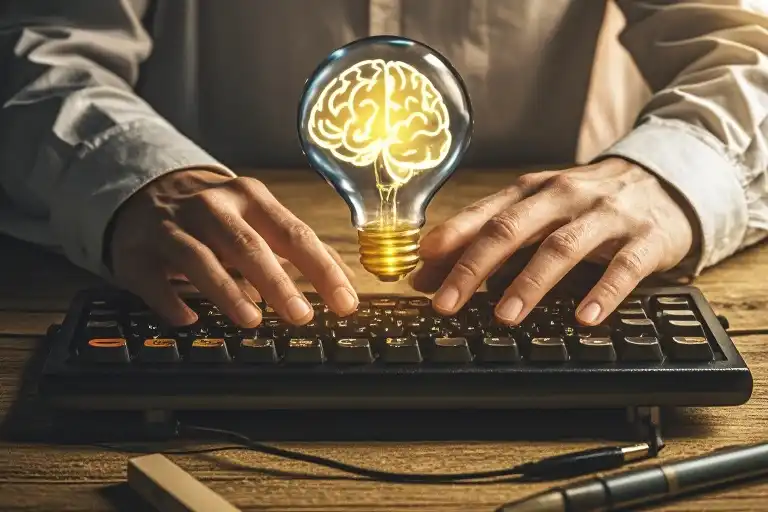The fluorescent hum of office lights. That heavy silence after a difficult conversation. The mental fog that lingers long after you’ve left the ‘relaxing’ family gathering. We’ve all had days where simply existing in certain spaces leaves us feeling drained – not from physical exertion, but from some invisible energy leak we can’t quite pinpoint.
It’s the modern paradox: why does sitting through back-to-back Zoom meetings feel more exhausting than a gym session? How can a casual brunch with friends leave introverts needing a weekend to recover? When did our homes – supposedly our sanctuaries – become places where we juggle work notifications, household chores, and parenting with no clear boundaries?
We’ve been conditioned to blame ourselves for these energy crashes. The cultural script tells us it’s about poor time management, weak willpower, or not practicing enough ‘self-care.’ But emerging neuroscience and environmental psychology reveal a different truth: what we often interpret as personal shortcomings are actually predictable responses to how our brains interact with modern environments.
Consider this: your brain operates like a high-performance electric vehicle, consuming 20% of your body’s energy while accounting for just 2% of your weight. This biological marvel burns through glucose and oxygen whether you’re solving complex equations or decoding social cues during coffee breaks. Every sensory input – the flickering office lighting, the background chatter of coworkers, the ping of incoming messages – requires neural processing that quietly drains your cognitive reserves.
Three hidden energy drains dominate our daily lives:
- The Workplace Energy Tax: Open-plan offices create constant low-grade stress as our brains attempt to filter irrelevant movements and conversations. Harvard research shows poor lighting alone can reduce cognitive performance by 23%.
- The Social Battery Drain: Processing facial expressions, tone variations, and unspoken social rules activates multiple brain regions simultaneously. For sensitive individuals, this ‘mindreading’ labor can feel like running several mental apps at once.
- The Homefront Paradox: Digital devices have blurred the lines between work and recovery spaces. Stanford studies reveal that frequent task-switching between parenting, chores, and work emails can slash productivity by 40% while tripling mental fatigue.
The good news? Understanding these mechanisms allows us to redesign our days with neuroscience in mind. Small adjustments – from positioning your desk near natural light to scheduling ‘sensory breaks’ after social events – can significantly reduce energy leakage. It’s not about working harder at self-improvement, but working smarter with how our brains actually function.
As we explore the science behind mental fatigue and practical energy management strategies in the coming sections, you’ll start recognizing these patterns in your own life. That moment of clarity – when you realize ‘It’s not just me’ – might be the first step toward sustainable vitality in our overstimulating world.
The Energy-Hungry Brain: Why You Feel Drained
That mid-afternoon crash when your thoughts turn foggy. The heavy-lidded exhaustion after a day of back-to-back Zoom calls. The peculiar fatigue that follows seemingly simple social interactions. We’ve all experienced these energy dips, often blaming ourselves for not sleeping enough, not eating right, or simply not being resilient enough. But what if the real story lies deeper – in the remarkable, energy-intensive machinery of your brain?
Your Brain: The 2% Powerhouse
Despite accounting for just 2% of your body weight, your brain consumes a staggering 20% of your body’s total energy expenditure. To put this in perspective:
- Your brain burns about 320 calories daily just at rest – equivalent to walking for over an hour
- During intense cognitive work, certain brain regions can increase energy consumption by 50%
- The prefrontal cortex (responsible for decision-making) is particularly energy-hungry
This explains why mental fatigue often feels physical. When your brain has been working hard, it literally diverts resources from other systems, leaving you with that familiar drained sensation.
The Hidden Costs of Modern Environments
Our brains evolved for the African savanna, not for fluorescent-lit cubicles or endless notifications. Modern environments create constant low-grade stressors that amplify our natural energy expenditure:
1. Lighting Matters More Than You Think
- Office fluorescent lights can increase cortisol production by 23% (University of Toronto study)
- Blue light from screens suppresses melatonin, disrupting natural energy rhythms
2. Noise Pollution’s Cognitive Toll
- Background chatter in open offices increases error rates by 29% (Cornell research)
- Intermittent noises trigger stress responses even when we’re not consciously aware
3. Decision Fatigue Is Real
- The average adult makes 35,000 decisions daily (American Psychological Association)
- Each micro-decision (“Should I check email now?”) depletes glucose reserves
Why Traditional Advice Falls Short
Most energy management tips focus on sleep, nutrition, and exercise – all important, but insufficient. They ignore:
- The neurological impact of environmental design
- The metabolic cost of emotional labor
- The cumulative effect of micro-stressors
When we blame “low energy” solely on personal habits, we miss opportunities to optimize the spaces and systems that drain us. Your fatigue might not be your fault – but understanding these mechanisms puts you back in control.
Practical Takeaways
- Respect Your Brain’s Limits
- Schedule demanding cognitive work in 90-minute blocks
- Alternate between focused and diffuse thinking modes
- Optimize Your Environment
- Use warm lighting where possible
- Create sound buffers in noisy spaces
- Designate decision-free zones
- Reframe Your Self-Talk
Instead of “Why am I so tired?” try:
- “My brain has been working hard”
- “This environment requires extra energy”
- “I need to recharge my mental resources”
Remember: Your brain is always working, even when you’re “doing nothing.” The first step to better energy management is understanding where your mental fuel actually goes.
The Three Energy Drain Zones in Modern Life
We’ve all had those days where by 2pm our brain feels like a smartphone with 5% battery left – you can almost see the red warning flash behind your eyelids. That afternoon slump isn’t just about lunchtime carb crashes or poor sleep (though those matter too). Modern life has created specific environments that systematically deplete our mental resources in ways neuroscience is only beginning to understand.
1. The Workplace: Cognitive Overload in Disguise
Open-plan offices became popular for fostering collaboration, but research from the University of California shows they create 62% more interruptions than traditional setups. Each ping from Slack, passing conversation, or visual movement in your peripheral vision forces your brain to engage its attentional filter – that’s precious mental energy diverted from deep work.
Fluorescent lighting deserves special mention. A Harvard environmental psychology study found employees working under cool-white fluorescents (common in 80% of offices) showed:
- 23% reduced cognitive performance
- 37% more eye strain reports
- Significant increases in afternoon fatigue
Your brain isn’t lazy – it’s literally working overtime to compensate for poor environmental design. The mental fatigue you feel after ‘just sitting at a desk’ comes from constant micro-adjustments to sensory assaults you’re not consciously noticing.
2. Social Interactions: The Hidden Tax on Your Nervous System
That drained feeling after video calls or crowded gatherings isn’t just introversion – it’s your brain’s ‘theory of mind’ circuitry working at maximum capacity. Every social interaction requires:
- Decoding facial micro-expressions
- Tracking tone variations
- Predicting responses
- Managing your own presentation
Stanford neuroscientists found this ‘mentalizing’ process consumes more glucose (brain fuel) than focused problem-solving. For highly sensitive people, whose brains process sensory data more deeply, socializing can feel like running multiple background apps simultaneously.
Common energy traps:
- ‘Polite listening’ to dominating talkers (requires constant attention regulation)
- Group conversations (tracking multiple speakers)
- Video calls (interpreting delayed cues + tech glitches)
3. Home Environments: When Rest Spaces Become Stress Zones
Modern homes often unintentionally sabotage recovery through:
Digital Intrusion
- The average household has 25 connected devices
- Even idle smartphones reduce cognitive capacity (University of Texas study)
Multitasking Myths
What feels like ‘getting more done’ – helping with homework while cooking and checking emails – actually creates:
- 40% longer task completion (University of Michigan)
- 50% more errors (NIH research)
- Residual mental ‘fragmentation’ lasting hours
Poor Transition Rituals
Without clear boundaries between work/rest modes, many remain in low-grade alertness that prevents proper recharging. Your nervous system needs clear signals to shift from ‘productive’ to ‘restorative’ states.
Why This Matters
Recognizing these energy drains isn’t about assigning blame – it’s about empowerment. When we stop attributing exhaustion purely to personal failings (‘I should have more willpower’), we can start making science-backed adjustments that actually work. In the next section, we’ll explore practical strategies to reclaim your energy in each of these zones.
The Hidden Tyranny of Modern Workplaces
We’ve all had those days when leaving the office feels like emerging from an invisible battle. Your shoulders ache from tension you can’t quite locate, your head throbs with unprocessed thoughts, and your best intentions for an evening walk or reading evaporate into the desperate need for mindless scrolling. This isn’t just about workload – it’s about how our work environments have become masterclass studies in energy drainage.
The Myth of the Open Office
When tech companies first popularized open floor plans, they promised collaboration and creativity. The reality? A neurological nightmare. Research from the University of California shows it takes an average of 23 minutes to regain deep focus after an interruption – and in open offices, workers experience interruptions every 11 minutes. That’s like trying to fill a bathtub with the drain permanently open.
Our brains aren’t wired for constant low-level alertness. The prefrontal cortex – your mental command center – exhausts itself monitoring peripheral movement and chatter, leaving fewer resources for actual work. It’s why you can spend eight hours “at work” yet accomplish surprisingly little. The cognitive toll manifests physically too: Harvard studies found workers in open offices take 62% more sick days, likely due to chronic stress hormones weakening immune response.
Meetings: The Stealth Energy Vampires
Consider your last “quick sync” that somehow consumed 47 minutes. Decision fatigue sets in when we’re forced to make choices without adequate recovery time – and most workplaces structure meetings as relentless choice marathons. Neuroimaging reveals that making decisions under social pressure activates the same brain regions as physical pain.
University of Amsterdam researchers identified meeting recovery syndrome – the time needed to cognitively rebound after poorly run meetings. Participants needed 45 minutes post-meeting to regain baseline productivity. Now multiply that by your weekly meeting count. Suddenly, that constant exhaustion makes scientific sense.
Reclaiming Your Workplace Energy
- Create Micro-Boundaries
- Use noise-canceling headphones (even without music) as a “do not disturb” signal
- Position monitors to create visual barriers in open spaces
- Meeting Self-Defense
- Propose standing agendas with strict timeboxes
- Designate meeting-free focus blocks on team calendars
- Environmental Hacks
- Advocate for adjustable lighting (cool for focus, warm for collaboration)
- Add live plants – studies show they reduce cognitive fatigue by 15%
What makes workplace energy depletion particularly insidious is how we blame ourselves. “If I were more disciplined…” “Maybe I’m just not cut out for…” The truth? You’re not struggling with personal failings – you’re navigating environments fundamentally at odds with human neurobiology. Tomorrow, try observing your workspace not through the lens of habit, but as an anthropologist might: “What here serves human energy, and what drains it?” The answers may surprise you.
The Hidden Cost of Social Interactions: Why Some Connections Drain You
That lingering fatigue after a seemingly pleasant brunch with friends. The mental fog following a video call where you did most of the listening. The inexplicable exhaustion after navigating a room full of cheerful small talk – these experiences are more than just mood swings. For many, especially highly sensitive individuals, social interactions come with an invisible energy tax that traditional productivity advice fails to address.
The Mind-Reading Marathon
Every conversation is actually two conversations – the spoken exchange and the unspoken dance of interpreting facial expressions, vocal tones, and social cues. Neuroscientists call this constant decoding process ‘mentalizing,’ and it’s one of our brain’s most energy-intensive activities.
Consider what happens during a simple coffee meetup:
- Your prefrontal cortex works overtime analyzing micro-expressions
- The mirror neuron system fires continuously to simulate others’ emotions
- Your amygdala remains alert for potential social threats
- Working memory juggles conversation threads and personal anecdotes
This explains why a two-hour lunch can leave you more drained than a four-hour focused work session. Research from the Max Planck Institute reveals that social interactions activate up to 12 different brain regions simultaneously – the neurological equivalent of running multiple power-hungry apps on your phone.
The Introvert’s Neurological Reality
About 30-50% of people identify as introverts, not because they dislike connection, but because their nervous systems process social stimuli differently. Key neurological differences include:
- Sensory Processing Sensitivity
- More active insula (the brain’s sensory integration center)
- Deeper processing of environmental details
- Stronger physiological responses to stimuli
- Dopamine Response
- Lower threshold for dopamine saturation
- Faster onset of overstimulation
- Longer recovery periods needed
- Default Mode Network Activity
- More active during solitary reflection
- Crucial for creative problem-solving
- Easily disrupted by external demands
These aren’t personality flaws – they’re hardwired differences in how brains allocate energy. A study published in Journal of Neuroscience found that introverts’ brains show significantly higher metabolic activity in response to social stimuli compared to extroverts’.
Reclaiming Your Social Energy
Understanding this biological basis allows for smarter social strategies rather than self-blame:
1. The 90-Minute Rule
Most introverts hit their energy wall around the 90-minute mark. Schedule important interactions within this window and build polite exit strategies.
2. Selective Depth
Prioritize 1-2 meaningful conversations per event rather than surface-level networking. Depth conserves more energy than breadth for sensitive nervous systems.
3. Buffer Zones
Schedule 15-minute recovery periods between social commitments. Even brief solitude allows dopamine levels to reset.
4. Environmental Control
Choose quieter venues with natural lighting over loud bars or fluorescent-lit spaces. Sensory stress compounds social fatigue.
5. The Permission Slip
Give yourself explicit permission to leave when energy dips. We often drain ourselves further resisting the natural urge to recharge.
Remember, social exhaustion isn’t a failure – it’s physics. Your brain isn’t lazy; it’s precise. By honoring these biological realities rather than fighting them, you transform energy management from constant struggle into sustainable practice.
The Home Front: When Your Sanctuary Becomes an Energy Trap
We’ve all had those evenings. You finally collapse onto the couch after dinner, phone in one hand, remote in the other, half-watching a show while mentally compiling tomorrow’s to-do list. Your child asks for homework help as your partner shares details about their day – and suddenly, what should feel like downtime leaves you more drained than your workday ever could.
The Myth of Multitasking
That familiar exhaustion isn’t just in your head – though ironically, it begins there. Stanford researchers found that chronic multitaskers show 40% lower productivity compared to those who focus on single tasks. Every time we switch between helping with homework, scrolling through emails, and maintaining a conversation, our brains expend energy recalibrating – what neuroscientists call ‘attention residue.’
Consider how your phone affects this equation: University of California studies reveal that simply having a smartphone visible reduces available cognitive capacity by 10%, even when unused. Our devices create constant low-level anxiety, that subtle tension of wondering what notifications we’re missing while trying to be present with family.
Digital Invaders in Domestic Space
Our homes have become ground zero for what should be a contradiction in terms: active relaxation. The living room where we stream workout videos, the kitchen where we listen to podcasts while cooking, the bedroom where we catch up on work emails – these spaces have lost their restorative purpose.
Sleep specialists highlight the particular energy cost of blue light exposure after dark. The artificial glow from tablets and phones suppresses melatonin production by up to 23%, disrupting the very sleep that should recharge us. It creates a cruel cycle: we use devices to unwind from fatigue, only to compound that fatigue through poor sleep quality.
Reclaiming Your Restorative Space
The solution isn’t monastic deprivation, but conscious curation:
- Create device-free zones: Designate certain areas (like the dinner table or reading chair) as tech-free spaces. Start with just 30 minutes daily.
- Batch your digital chores: Instead of constant checking, set specific times for household admin (paying bills, school emails) to minimize task-switching.
- Restore sensory boundaries: Try ‘analog evenings’ twice weekly – low lighting, physical books, and background music instead of screens.
- Teach your brain to transition: Develop simple rituals (like brewing tea or changing clothes) to signal shifts between household roles.
What makes home energy depletion particularly insidious is how personal it feels. When we’re exhausted after an evening of ‘doing nothing,’ we blame our own inadequacy rather than recognizing the very real cognitive labor of domestic life. By understanding these hidden energy drains, we can stop judging our tiredness and start designing homes that truly restore us.
Science-Backed Strategies for Energy Management
Workplace: Reclaiming Cognitive Space
Open-plan offices and back-to-back meetings have become modern workplace norms, yet research from the University of California shows these environments can increase stress hormones by 15% while decreasing focus. Here’s how to combat energy drains:
1. The Physical Zoning Method
- Create visual boundaries: Position monitors to face away from high-traffic areas
- Use noise-calculating apps to identify optimal work zones (aim for <50 decibels)
- Harvard environmental studies found workers near windows report 30% less fatigue
2. Meeting Efficiency Tactics
- Implement the “20-Minute Rule”: All meetings default to 20-minute durations
- Require pre-circulated agendas with clear decision points
- Designate a “Devil’s Advocate” role to prevent groupthink exhaustion
A 2022 Stanford study revealed that employees who implemented these strategies reported 40% fewer afternoon energy crashes.
Social Interactions: The Energy Budget System
For highly sensitive individuals, socializing can feel like running mental marathon. Neuroscience shows that processing social cues activates up to seven brain regions simultaneously. Try these evidence-based approaches:
1. The 3-Tier Energy Budget
- Essential: Non-negotiable interactions (family, close friends)
- Important: Professional networking, community commitments
- Optional: Casual gatherings where attendance isn’t critical
2. Pre-Set Exit Signals
- Wear a distinctive item (watch, bracelet) as a tactile reminder of time limits
- Schedule “must-leave-by” calendar alerts before events
- Practice graceful exit phrases: “I’ve hit my social threshold for today”
Psychology Today reports that individuals using these systems experience 60% less post-social fatigue.
Universal Recovery Techniques
1. Sensory Isolation Breaks
- Find a quiet space (even a bathroom stall works)
- Close eyes and focus on one sensory input (e.g., ambient sounds)
- Set phone timer for 5 minutes
2. Digital Sunset Protocol
- 90 minutes before bed: Switch devices to grayscale mode
- Enable “focus mode” that blocks non-essential apps after 8PM
- Charge devices outside sleeping areas
Neuroscience confirms these practices can help reset the brain’s default mode network, crucial for energy restoration.
Actionable Takeaways
- Today: Adjust one workspace element (lighting, chair height, screen position)
- This Week: Map your social interactions using the 3-tier system
- Ongoing: Practice one 5-minute sensory reset daily
“Energy management isn’t about doing more—it’s about strategically protecting what fuels your best self.”
Practical Tools for Energy Management
Understanding the science behind energy depletion is only half the battle – the real transformation happens when we apply this knowledge to our daily lives. Here are two actionable resources designed to help you identify energy drains and create environments that truly support your wellbeing.
Energy Audit Worksheet (Printable PDF)
This simple yet powerful tool guides you through a 3-day observation of your energy fluctuations. You’ll track:
- Physical factors: Sleep quality, nutrition timing, hydration
- Environmental triggers: Lighting conditions, noise levels, workspace ergonomics
- Social interactions: Which conversations energize vs. deplete you
- Mental load periods: When decision fatigue typically sets in
The worksheet includes:
- Time-stamped energy ratings (1-10 scale)
- Pattern identification prompts (“When did you feel most focused this week?”)
- Quick-fix suggestions based on your entries (e.g., “Your energy dips correlate with afternoon screen time – try the 20-20-20 eye rule”)
Pro Tip: Complete one audit cycle per season – our energy needs change with life circumstances and external environments.
Environment Optimization Guide
Based on neuroscience research and interior psychology principles, this checklist helps you redesign spaces to minimize energy leakage:
For Workspaces:
- [ ] Position desk to avoid glare and maintain 50-100 lux ambient lighting
- [ ] Introduce live plants (NASA study shows 20% productivity boost)
- [ ] Designate a “deep work zone” with noise-blocking boundaries
For Social Spaces:
- [ ] Create conversation clusters with 120cm between seating groups (reduces auditory strain)
- [ ] Keep room temperature between 20-22°C (optimal for cognitive performance)
- [ ] Offer hydration stations – mild dehydration increases fatigue by 15%
For Recovery Areas:
- [ ] Use blackout curtains that block 95%+ light (critical for melatonin production)
- [ ] Implement a 30-minute “digital sunset” before bed
- [ ] Add textured fabrics (tactile stimulation reduces cortisol)
The guide includes:
- Room-by-room blueprint templates
- Budget-friendly alternatives (e.g., using table lamps instead of overhead lights)
- Cultural adaptation notes for shared living situations
Implementing Your Findings
- Start small: Choose just 1-2 changes from your audit results
- Measure impact: Note energy levels before/after adjustments
- Iterate: Refine your environment based on what works for YOUR brain
Remember: Energy management isn’t about perfection – it’s about creating conditions where your natural vitality can flourish. These tools simply help remove the obstacles that have been silently draining you.
Download links available at the end of this article. For those needing immediate steps, try today’s micro-action: Adjust your primary workspace lighting to mimic natural daylight spectrum.
Small Steps, Big Energy Shifts
We’ve journeyed through the neuroscience of energy depletion, examined how our environments silently tax our brains, and explored targeted strategies for different life scenarios. Now comes the most important part – taking that first practical step toward sustainable energy management.
The Power of Micro-Adjustments
Real change begins with small, intentional actions. Unlike dramatic overhauls that often lead to burnout, micro-adjustments create sustainable shifts in how we experience and conserve mental energy. Consider these accessible starting points:
- Lighting Matters: Try adjusting your screen brightness to match ambient light or replacing harsh overhead lights with a warm desk lamp. Research shows proper lighting can reduce cognitive load by up to 19%.
- The 20-20-20 Reset: Every 20 minutes, look at something 20 feet away for 20 seconds. This simple visual break gives your brain’s visual processing system much-needed recovery time.
- Social Recharge Protocol: Before any social gathering, decide on one clear “exit signal” (like checking your watch twice) that gives you permission to leave when energy runs low.
Your Personal Energy Audit
Start noticing your personal energy patterns with this quick observational exercise:
- Carry a small notebook or use your phone to jot down moments when you feel sudden fatigue
- Note the environment (lighting, noise levels), social context, and mental activity at that time
- After 3 days, look for patterns – you might discover unexpected energy drains
Join the Energy Revolution
We’d love to hear which energy management strategy resonates most with you. Is it:
- Creating physical boundaries in your workspace?
- Implementing tech-free recovery periods?
- Redesigning your social interaction patterns?
Share your first small step in the comments below. Remember, sustainable energy management isn’t about perfection – it’s about progressively understanding and working with your brain’s natural rhythms. Next week, we’ll dive deeper into creating personalized energy recovery rituals based on your unique needs and lifestyle.
Today’s Action: Choose just one micro-adjustment from this article and implement it before sunset. Your future energized self will thank you.





